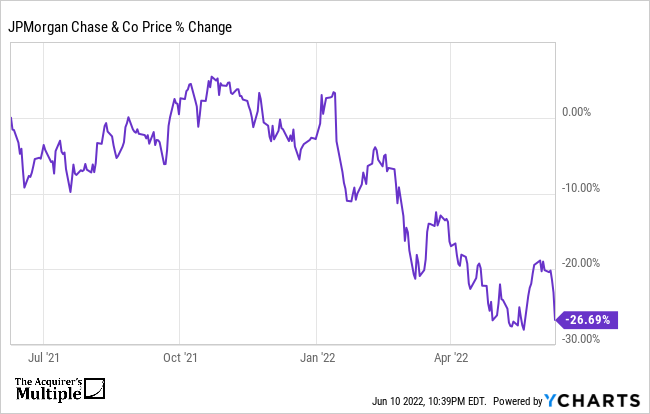
Here are the top dividend paying stocks that you can buy. In this article, I have listed the top companies such as Rio Tinto, Eli Lilly and Pfizer. These are great investments you could make today. Continue reading to find out more. We'll start with Rio Tinto. Learn more about Rio Tinto's top dividend stock.
Pfizer
Pfizer's dividend is a prime example for a great dividend. Many investors don't have time to invest in the complexities of investing. The company reported $0.39 diluted earnings per share (EPS), at the end of the third-quarter 2016. Additionally, the company paid a quarterly per share dividend. The company's business is being affected by the US pandemic, but its stock continues to pay a huge dividend.
Pfizer expects that its annual revenue growth will be at least 6% through 2025, even though COVID-19 vaccines are not yet available. The company is losing exclusive rights to several of its most important drugs. Merck's pipeline, which includes the cancer immunotherapy Keytruda and the human papillovirus vaccination Gardasil, is expected to boost its earnings over five years.

Rio Tinto
The mining and metals company Rio Tinto is the best dividend paying stock for investors who value safety over growth. Rio Tinto's production volume is stable year after year. This allows for easier forecasting of future production volumes. This company has a long track record of producing high quality metals. Because of its high-quality earnings as well as consistent production volumes, the company is one among the highest dividend paying stocks.
The company's financial position is strong and it has good cash flows. The company's P/E ratio is 6.08 in FY2021 and 7.99 for FY2022. Its dividend is steadily rising and is expected to surpass 13% in 2022. Rio Tinto's revenues and net cash generated are expected to rise over the next few decades. The dividend yield has also been growing. It has outperformed by 107% the S&P 500 over the past five-years.
Eli Lilly
Eli Lilly is a great stock to choose if you are looking for a high-yielding stock with strong dividend payouts. The company's earnings grew like weeds last year and they don't seem to be slowing down anytime soon. The analysts forecast that the company will grow earnings by 9% annually, which seems quite conservative considering that earnings grew at a staggering 19% per yr five years back. As an added bonus, Eli Lilly has a strong pipeline of drugs in development.
This company's dividend has increased by over 7.2% annually over the past ten years, which is better than the average for the industry. Its 41.7% dividend payout ratio makes it a strong company that will increase its payouts as earnings rise. Eli Lilly will likely maintain a low dividend growth rate of less than 2% over the long term and keep its payout ratio under 45%. And, with a market-matching 1.4% yield, it's hard to go wrong with Eli Lilly.

Housing & Urban Development Corporation
Housing & Urban Development Corporation is the dividend-paying stock that India has to offer. This PSU pays a 6.1% annual dividend, and trades with a PE ratio at 4.1. It has a steady growth rate for its dividend and no promises by promoters. HUDCO is often a slow-moving stock and its price has been dragging sideways. The stock should trade above the 36 closing levels. This could be a good moment to buy. Long-term targets: 44 and 46.
Housing & Urban Development Corporation shares could be a good investment option if you are interested in investing in the development of housing. It is a fully owned, government-owned corporation that offers loans for housing projects and urban infrastructure in India. The company provides residential real estate, social housing services, and retail finance through the HUDCO Niwas program. HUDCO offers water, power, sewerage and drainage services in addition to housing projects.
FAQ
Are bonds tradeable?
They are, indeed! As shares, bonds can also be traded on exchanges. They have been doing so for many decades.
The only difference is that you can not buy a bond directly at an issuer. You will need to go through a broker to purchase them.
This makes buying bonds easier because there are fewer intermediaries involved. This also means that if you want to sell a bond, you must find someone willing to buy it from you.
There are different types of bonds available. There are many types of bonds. Some pay regular interest while others don't.
Some pay quarterly interest, while others pay annual interest. These differences make it possible to compare bonds.
Bonds can be very helpful when you are looking to invest your money. Savings accounts earn 0.75 percent interest each year, for example. You would earn 12.5% per annum if you put the same amount into a 10-year government bond.
If you were to put all of these investments into a portfolio, then the total return over ten years would be higher using the bond investment.
What is a Stock Exchange?
Companies can sell shares on a stock exchange. This allows investors and others to buy shares in the company. The market sets the price of the share. It is usually based on how much people are willing to pay for the company.
Stock exchanges also help companies raise money from investors. Companies can get money from investors to grow. They do this by buying shares in the company. Companies use their money in order to finance their projects and grow their business.
There are many kinds of shares that can be traded on a stock exchange. Some of these shares are called ordinary shares. These are the most popular type of shares. Ordinary shares are bought and sold in the open market. Shares are traded at prices determined by supply and demand.
Other types of shares include preferred shares and debt securities. When dividends are paid, preferred shares have priority over all other shares. A company issue bonds called debt securities, which must be repaid.
How are securities traded
The stock exchange is a place where investors can buy shares of companies in return for money. Investors can purchase shares of companies to raise capital. When investors decide to reap the benefits of owning company assets, they sell the shares back to them.
The price at which stocks trade on the open market is determined by supply and demand. The price goes up when there are fewer sellers than buyers. Prices fall when there are many buyers.
There are two ways to trade stocks.
-
Directly from your company
-
Through a broker
What is a fund mutual?
Mutual funds consist of pools of money investing in securities. They allow diversification to ensure that all types are represented in the pool. This helps reduce risk.
Professional managers oversee the investment decisions of mutual funds. Some funds offer investors the ability to manage their own portfolios.
Because they are less complicated and more risky, mutual funds are preferred to individual stocks.
Statistics
- "If all of your money's in one stock, you could potentially lose 50% of it overnight," Moore says. (nerdwallet.com)
- Our focus on Main Street investors reflects the fact that American households own $38 trillion worth of equities, more than 59 percent of the U.S. equity market either directly or indirectly through mutual funds, retirement accounts, and other investments. (sec.gov)
- Individuals with very limited financial experience are either terrified by horror stories of average investors losing 50% of their portfolio value or are beguiled by "hot tips" that bear the promise of huge rewards but seldom pay off. (investopedia.com)
- Ratchet down that 10% if you don't yet have a healthy emergency fund and 10% to 15% of your income funneled into a retirement savings account. (nerdwallet.com)
External Links
How To
How to open a trading account
Opening a brokerage account is the first step. There are many brokers available, each offering different services. Some charge fees while others do not. Etrade is the most well-known brokerage.
After you have opened an account, choose the type of account that you wish to open. These are the options you should choose:
-
Individual Retirement Accounts, IRAs
-
Roth Individual Retirement Accounts
-
401(k)s
-
403(b)s
-
SIMPLE IRAs
-
SEP IRAs
-
SIMPLE 401(k).
Each option offers different benefits. IRA accounts have tax benefits but require more paperwork. Roth IRAs allow investors deductions from their taxable income. However, they can't be used to withdraw funds. SIMPLE IRAs can be funded with employer matching funds. SEP IRAs work in the same way as SIMPLE IRAs. SIMPLE IRAs have a simple setup and are easy to maintain. Employers can contribute pre-tax dollars to SIMPLE IRAs and they will match the contributions.
Finally, you need to determine how much money you want to invest. This is your initial deposit. Most brokers will offer you a range deposit options based on your return expectations. Depending on the rate of return you desire, you might be offered $5,000 to $10,000. The lower end represents a conservative approach while the higher end represents a risky strategy.
After choosing the type of account that you would like, decide how much money. There are minimum investment amounts for each broker. These minimums vary between brokers, so check with each one to determine their minimums.
After you've decided the type and amount of money that you want to put into an account, you will need to find a broker. Before selecting a brokerage, you need to consider the following.
-
Fees-Ensure that fees are transparent and reasonable. Many brokers will offer rebates or free trades as a way to hide their fees. However, some brokers raise their fees after you place your first order. Avoid any broker that tries to get you to pay extra fees.
-
Customer service – You want customer service representatives who know their products well and can quickly answer your questions.
-
Security - Look for a broker who offers security features like multi-signature technology or two-factor authentication.
-
Mobile apps: Check to see whether the broker offers mobile applications that allow you access your portfolio via your smartphone.
-
Social media presence – Find out if your broker is active on social media. If they don't, then it might be time to move on.
-
Technology - Does the broker utilize cutting-edge technology Is the trading platform user-friendly? Are there any issues when using the platform?
Once you have selected a broker to work with, you need an account. Some brokers offer free trials. Others charge a small amount to get started. After signing up you will need confirmation of your email address. Next, you will be asked for personal information like your name, birth date, and social security number. Finally, you will need to prove that you are who you say they are.
Once verified, you'll start receiving emails form your brokerage firm. These emails contain important information and you should read them carefully. For instance, you'll learn which assets you can buy and sell, the types of transactions available, and the fees associated. Keep track of any promotions your broker offers. You might be eligible for contests, referral bonuses, or even free trades.
Next, you will need to open an account online. Opening an account online is normally done via a third-party website, such as TradeStation. These websites can be a great resource for beginners. When you open an account, you will usually need to provide your full address, telephone number, email address, as well as other information. After you submit this information, you will receive an activation code. This code is used to log into your account and complete this process.
After opening an account, it's time to invest!